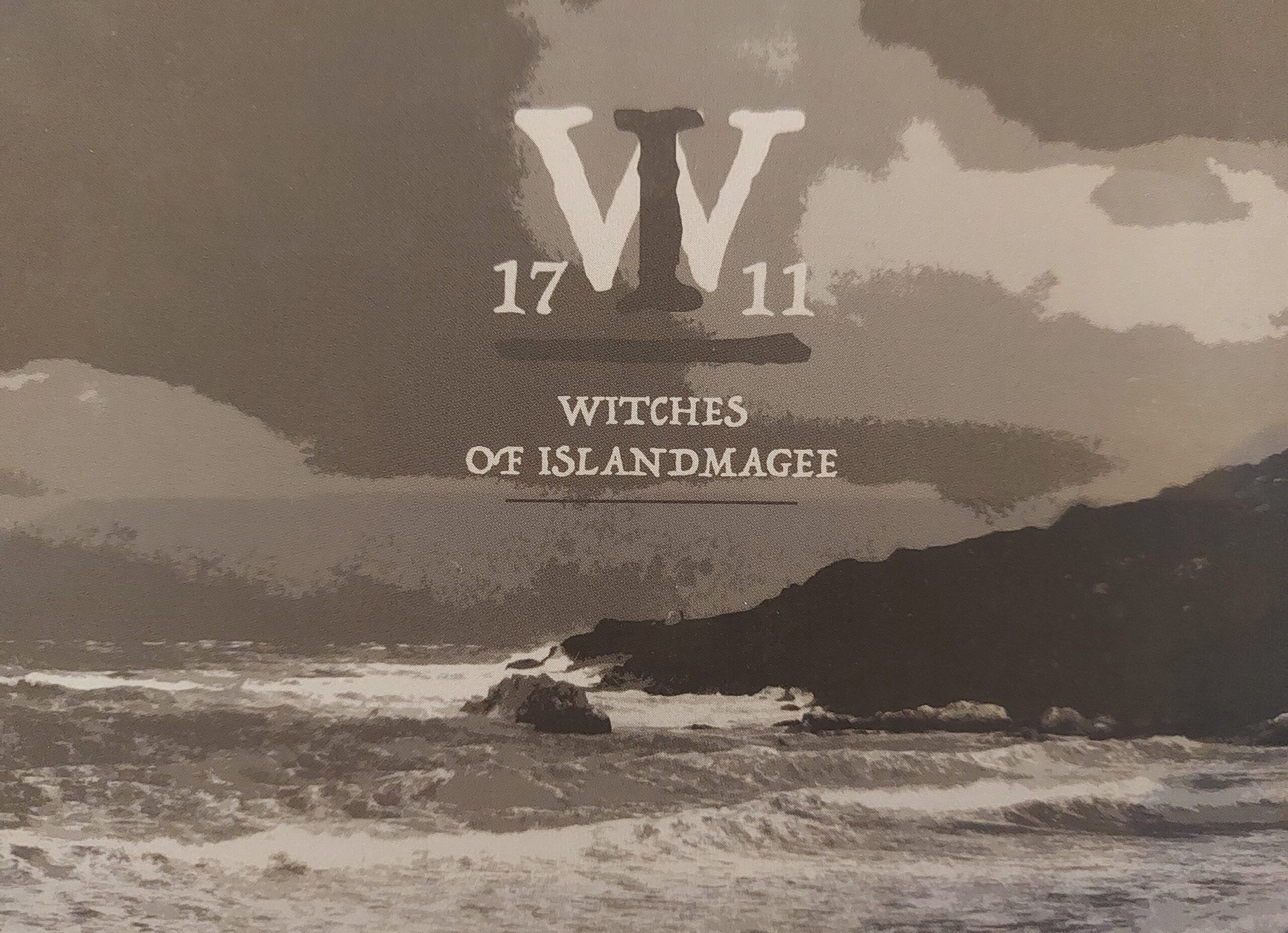The Witches of Islandmagee
It’s been a long time on the list of Wild Gees plans, not least because the Island has a Gee in its name. The fact that the Witches of Islandmagee exhibition at Carrickfergus museum was coming to a close made it a priority. So on a ridiculously calm and clear November day before the arrival of Storm Debi, the Gees flew up to the North.
The exhibition is the brainchild of Dr Andrew Sneddon and Dr Victoria McCollum of the University of Ulster, with the aim of exploring “this neglected Irish social and cultural history”. Partly a response to the lack of commemoration of the 300th anniversary of the Islandmagee witch trials of 1711, their project www.w1711.org documents all that has taken place since then to remedy that. They have invited artists, students and members of the community to engage with the history of the trials. The project has generated a graphic novel, poetry, lino prints and art installations, as well as a video game and an immersive VR experience.
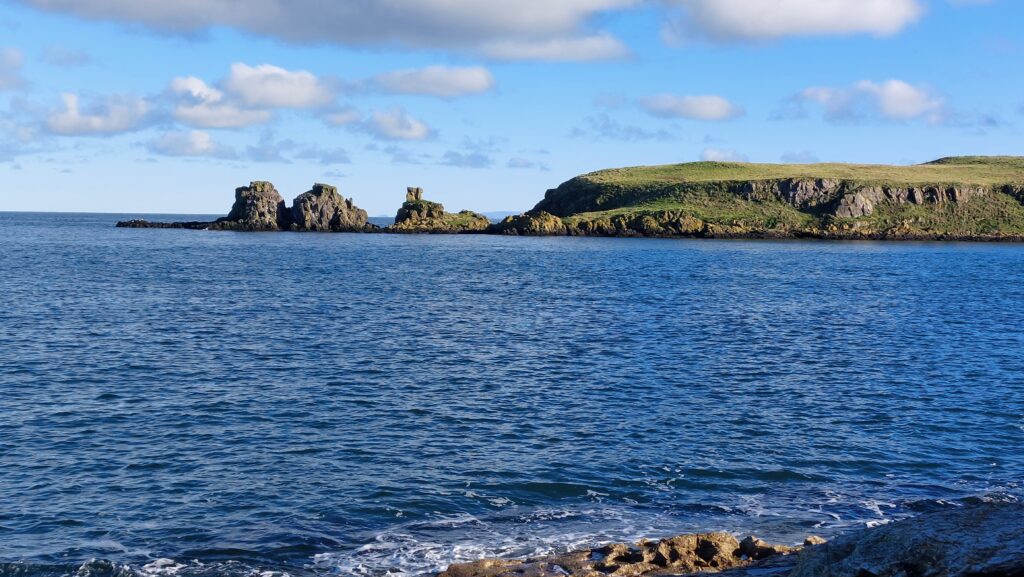
“Make her fall very often into fainting and tormenting fits, take the Power of Tongue from her, and… she often thinks she is pierced to the heart, and that her breasts are cut off”
Testimony of Mary Dunbar, 12 March 1711. Depositions in the case of the Islandmagee Witches.
We were very glad to have experienced all this for ourselves before it ended. We raced up on the Friday as Google told us the museum was closed on Saturdays. It lied. The deceptively small exhibition space within the Carrickfergus Museum contained a multitude. With glass cases enclosing historical documents and artefacts and beautiful information panels (see below) detailing the trials, it began conventionally but the panels were then interspersed with artistic responses to the trials.
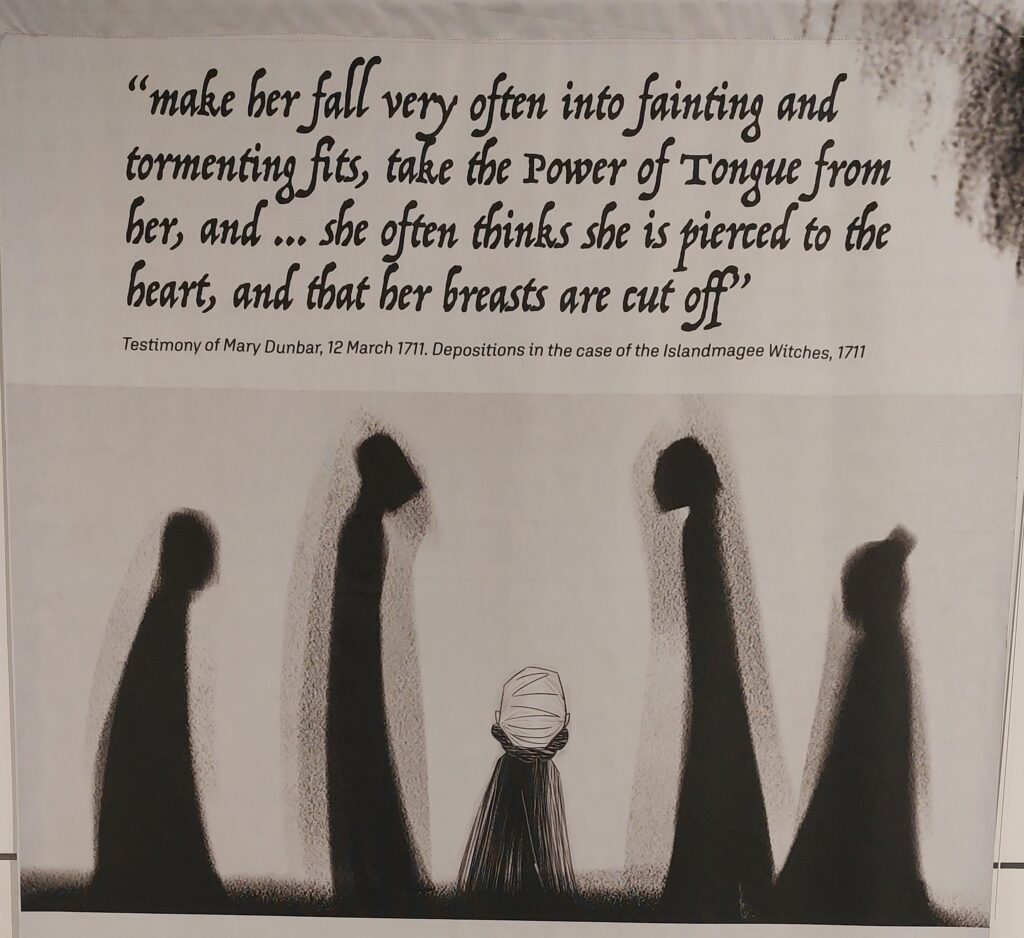
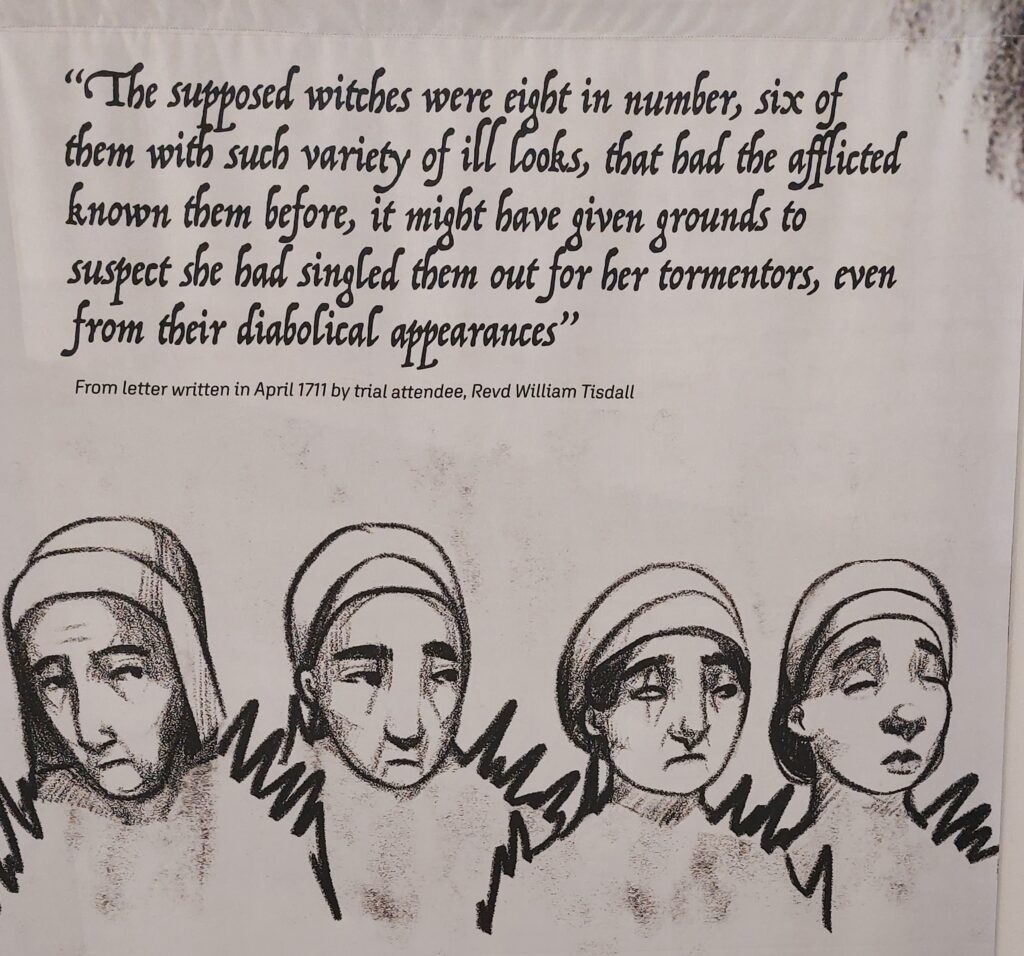
In 1711, Presbyterian communities were established and Ulster Scots and were not immune to the witch panic that had swept through Scotland. When a member of the parish, Ann Haltridge, died having shown signs of bewitchment such as fits, her niece Mary Dunbar arrived and immediately began doing the same. A “bewitched bonnet” was found that was taken as evidence and Mary began pointing fingers at women in the parish. Coincidentally, all the women were non-conforming aul’ wans. They were ugly, with physical impairments, liked a drink and a smoke, were heard cursing and swearing, and were guilty of “unneighbourly conduct”, so were believable as witches. And four of them were called Janet.
“The supposed witches were eight in number, six of them with such variety of ill looks, that had the afflicted known them before, it might have given grounds to suspect she had singled them out for her tormentors, even form their diabolical appearances.”
From letter written in April 1711 by trial attendee, Revd William Tisdall
Unlike in Scottish law, suspects in Ireland could not be tortured for a confession. All the accused vigorously denied the charges against them and were tried. The jury found them guilty and they served one year and one day in jail, again unlike Scotland where few of the accused survived. However, their imprisonment did nothing to improve Mary’s condition and she accused another ‘witch’ William Sellor, Janet Liston’s husband and Elizabeth Sellor’s dad. When Mary died a few weeks later, his charge became a felony for which he was hanged.
This made him one of the 10,000 men and 50,000 women killed during the witch trials across Europe, but only the second person in Ireland. The Irish Witchcraft Act was in force from 1586 to 1821 and the only other recorded trial was of Florence “Goody” Newton, the Witch of Youghal, in 1661. Goody’s fate is unknown. An earlier victim, Petronilla de Meath, predated the Act but was the first person burned at the stake in Ireland or Britain, in Kilkenny in 1324.
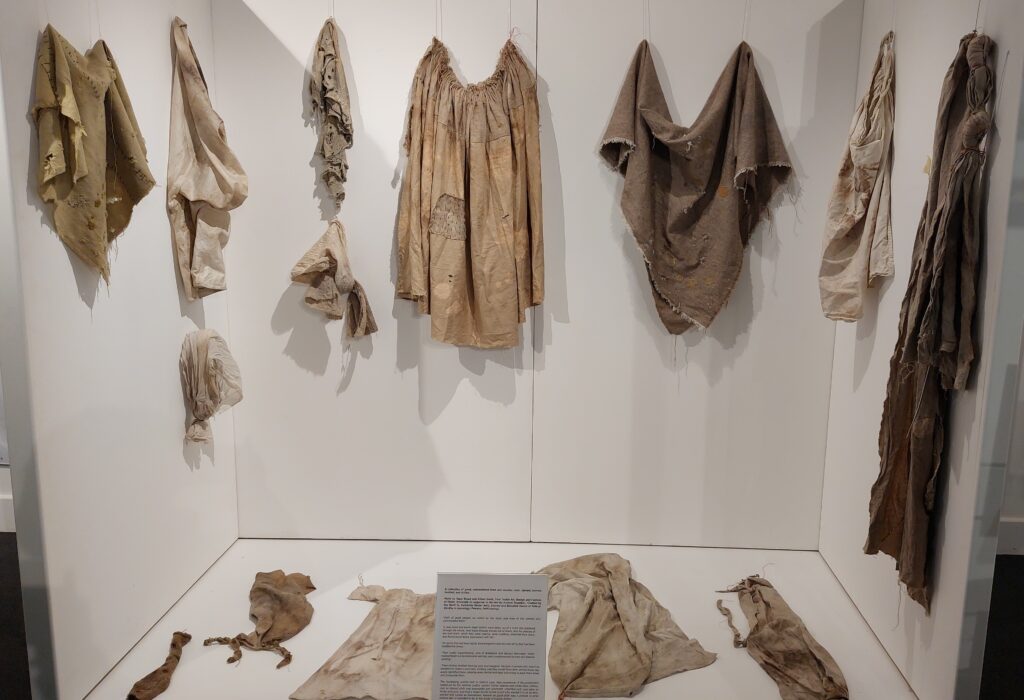
The exhibition enables a deep dive into the history of the trials. Glass cabinets contain contemporary documents, including trial transcripts, and artefacts like clay pipes – which the ‘witches’ were fond of smoking. There were also witch stones, or hag stones, which were thought to protect against witchcraft. These put us in mind of Wild Gees stan Sinead Gleeson, whose new book is called Hagstone and is due out in 2024 (yes, we’re excited!). The artwork included responses by members of the community. An installation of tattered linen clothing by University of Ulster students reflected the appearance of the accused as “poor and marginal”.
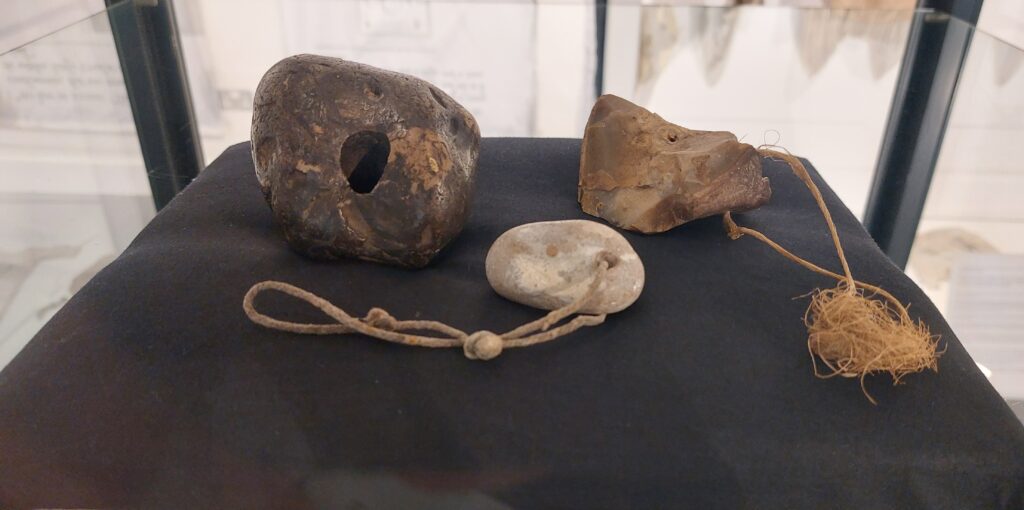
Then there’s the tech – a video game and a VR headset that put you into the body of one of the accused. The museum staff were endlessly patient with our inability to follow simple instructions, and we figured it out in the end. We’ll spare you the video of Gill trying and failing to pick up stuff using the hand controls, then yelping as a cabbage turned into an angry mob pelting her with rotten veg!
There’s even a graphic novel, The Witches of Islandmagee, which the museum didn’t stock so we had to visit The Secret Book Shelf – a magic space for book lovers tucked away in a courtyard in the Scotch Quarter of Carrickfergus. We may have left with a rake of books for the TBR pile, including Oein deBhairdúin’s Twiggy Woman and So Late in the Day by Claire Keegan.
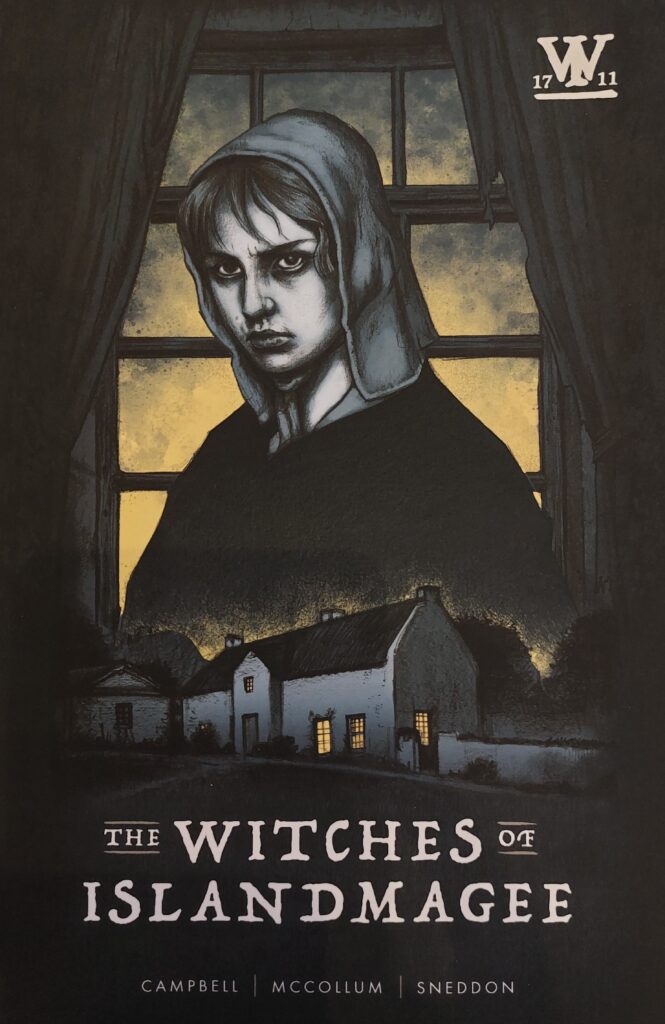
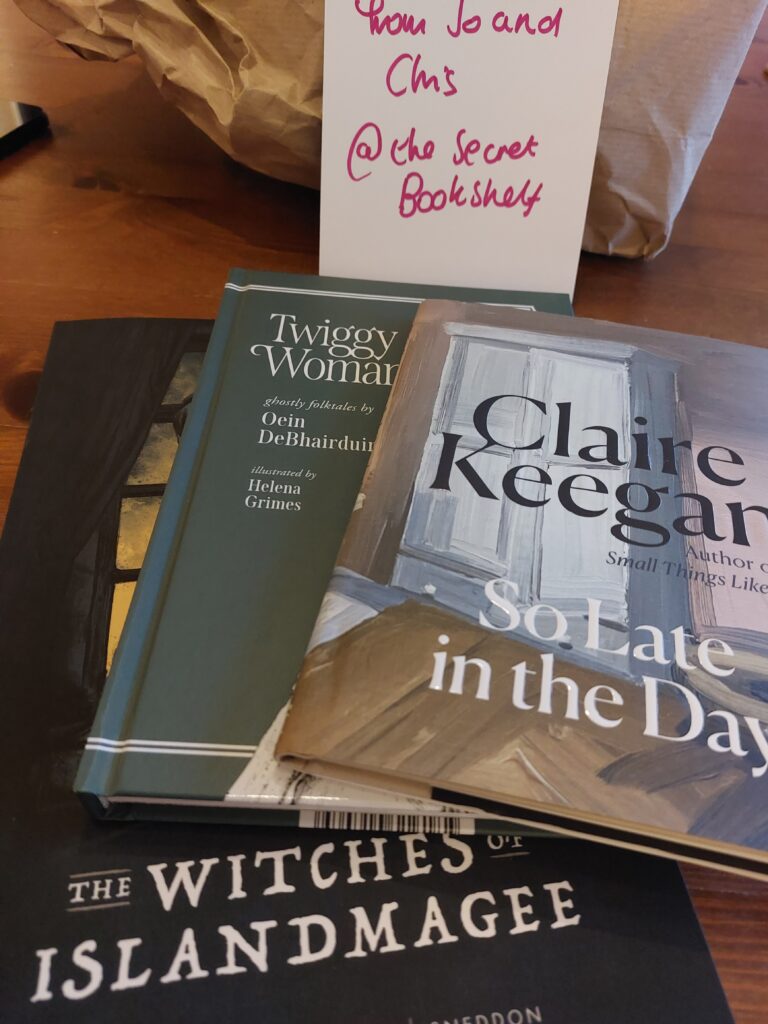
We also had to visit the town of Islandmagee itself. Earlier this year, a plaque commemorating the nine victims was installed outside The Gobbins visitor centre, despite the objections of a local Councillor. His concern was that the ‘witches’ may not have been innocent. So the wording of the plaque was changed to longer acknowledge their innocence. There are not enough eye roll emojis in the world for this.
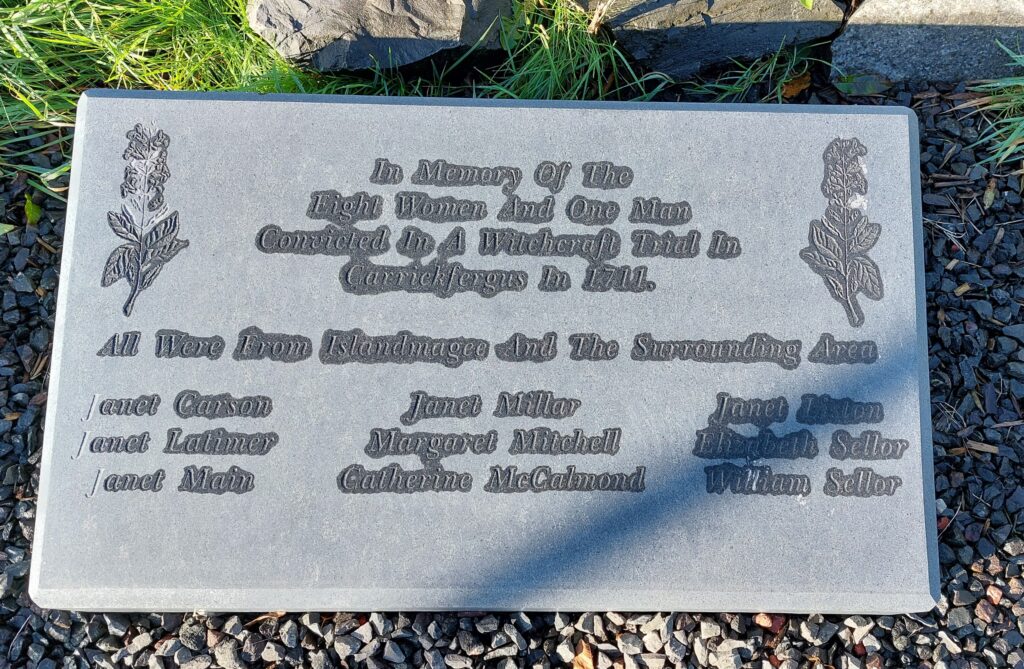
The old presbyterian church in the village has been replaced and the original building has fallen to ruin, though the graveyard survives and locals continue to be buried there. We stopped to pay our respects, assuming that some of the victims might have been buried here. We got chatting to a man repainting the old gate. He was there with his brother and nephew, replacing the stones on the grave of a grand uncle who had been killed in World War 2. A fighter pilot, he had been shot down over Germany, where he was interred. The gravestone is a memorial to him, and his family were doing this as an act of remembrance for Remembrance Day.
We were visiting a part of this land where the act of memory has been often politicised and used as an excuse for violence and division. Witnessing such a beautiful, genuine act for a family member was a privilege. The W1711 project is another act of remembrance, motivated by justice and compassion. More of this please.
In memory of:
Janet Carson
Janet Latimer
Janet Main
Janet Millar
Margaret Mitchell
Catherine MacCalmond
Janet Liston Sellor
Elizabeth Sellor
William Sellor
Bibliography
W1711 project https://w1711.org/exhibition/
Andrew Sneddon (2016). Witchcraft and Magic in Ireland. Reviewed by Dr Mary Ann Lyons, review of Witchcraft and Magic in Ireland (review no. 1946).
Delve into the trial of the ‘Islandmagee Witches’ at Carrickfergus Museum this Autumn, Mid and East Antrim Council, 25 August 2023
Florence Newton – the woman at the centre of one of Ireland’s greatest witch trials, Billy Riordan, Irish Examiner, 27 October 2016
I’ve met witches sats NI councillor ridiculed over plaque to trial victims, Belfast Telegraph, 5 December 2022

